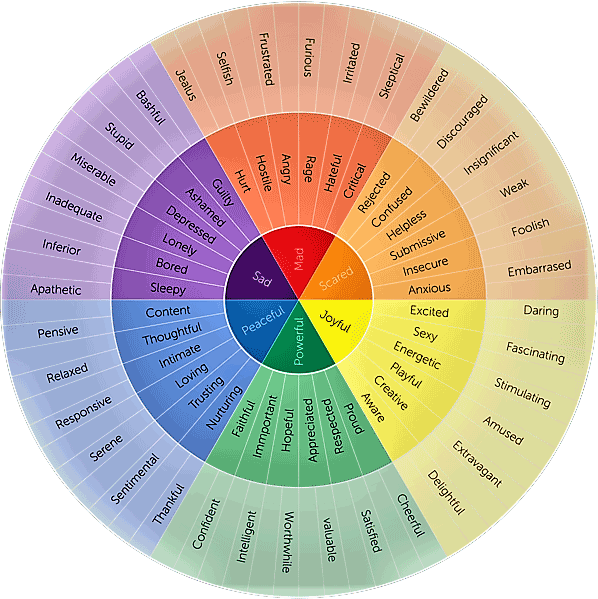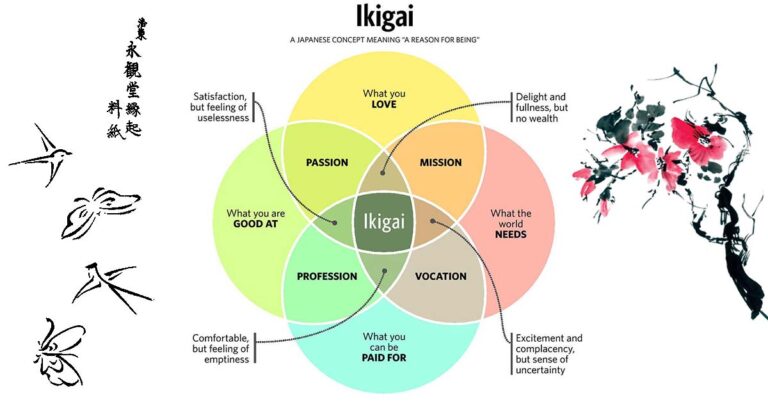Introduction
Emotions weave a complex tapestry that paints the human experience with vibrancy, enhancing our connections and steering our choices. In this article, we explore the profound layers of five fundamental emotions—Love, Hatred, Joy, Fear, and Sorrow—to grasp their core, influence, and the pivotal role they play in sculpting the fabric of our lives.
Definition of Emotions
Emotions are intricate physiological and psychological reactions that emerge in our minds and bodies, prompted by different stimuli or experiences. They span a spectrum of feelings, from profound joy to intense sorrow, serving as an internal guide, shaping our actions and reactions.
The Importance of Understanding Primary Emotions
Understanding our fundamental emotions is crucial, offering a pathway to navigate life’s obstacles with greater clarity and empathy. Exploring the nuances of Love, Hatred, Joy, Fear, and Sorrow enables us to untangle the complexities of the human psyche, fostering a more profound connection with both ourselves and others.
Understanding Love
Love, an enigmatic emotion that has inspired poetry, art, and revolution, is a force that binds individuals, families, and communities together. At its core, love is a multifaceted emotion that takes on different shades and forms in various relationships.
What is Love?
Love defies a single definition, as its manifestations are as diverse as the people who experience it. It can be an intense passion between romantic partners, a profound bond between family members, or a deep platonic connection between friends.
Different Facets of Love (Romantic, Familial, Platonic)
Romantic love encompasses the heady rush of infatuation and the steadfast devotion of long-term partnerships. Familial love manifests in the unbreakable bonds between parents and children or siblings. Platonic love, on the other hand, showcases the genuine affection and camaraderie between friends.
The Science Behind Love (Neurochemicals and Brain Activity)
Beyond the realm of emotions, love finds its roots in neurochemicals like oxytocin and dopamine, which create feelings of attachment and pleasure. The brain regions involved in love, such as the prefrontal cortex and the limbic system, play a crucial role in shaping our emotional experiences.
Expressions of Love in Different Cultures
Cultural influences shape the diverse ways in which love is expressed and celebrated worldwide. From traditional customs and rituals to modern-day gestures of affection, love’s expression varies significantly across different societies and communities.
Unraveling Hatred
While love fosters connection, hatred presents a stark contrast—a powerful emotion that breeds animosity and disdain between individuals and groups. To foster a harmonious world, it is essential to explore the roots of hatred and seek avenues for transformation.
Defining Hatred and Its Roots
Hatred emerges from a deep-seated resentment and negative emotions directed towards others. Understanding the underlying causes and triggers of hatred is crucial to addressing its harmful consequences.
The Dark Side of Hatred (Effects on Individuals and Society)
Hatred corrodes the soul of those who harbor it, leading to emotional distress, isolation, and even physical ailments. On a broader scale, the propagation of hatred can fuel conflicts, division, and intolerance within societies.
Overcoming Hatred and Promoting Tolerance
To combat hatred, fostering empathy, compassion, and open dialogue is paramount. Emphasizing understanding and tolerance can help bridge gaps, paving the way for a more inclusive and empathetic world.
Embracing Joy
Joy, a radiant emotion, brings moments of bliss and fulfillment, infusing life with light and positivity. Understanding the essence of joy and how to cultivate it can lead to a more content and purposeful existence.
The Meaning of Joy and Its Manifestations
Joy is a profound sense of happiness that transcends mere pleasure. It can manifest in small triumphs, heartwarming connections, and moments of pure delight, bringing a sense of fulfillment to life.
The Science of Happiness (Endorphins and Positive Psychology)
Behind the scenes, joy is associated with the release of endorphins and other neurotransmitters that elevate our mood and well-being. Positive psychology offers valuable insights into nurturing joy through gratitude and mindfulness practices.
Cultivating Joy in Daily Life
Intentionally seeking out moments of joy, embracing gratitude, and finding joy in simple pleasures can transform daily routines into uplifting experiences filled with happiness and contentment.
Confronting Fear
Fear, a primal emotion, serves as a crucial survival mechanism. Yet, in modern society, fear can also be a hindrance, holding us back from growth and opportunities. Understanding fear and its manifestations is key to transcending its limitations.
Understanding Fear and Its Evolutionary Purpose
Fear traces its roots back to our ancient ancestors who relied on it to survive life-threatening situations. In contemporary times, fear can arise from various sources, ranging from tangible threats to imagined anxieties.
Common Types of Fear (Phobias, Anxiety, and Panic)
Phobias, generalized anxiety, and panic attacks are common forms of fear experienced by individuals. Identifying and addressing these fears can lead to enhanced emotional well-being.
Coping Mechanisms for Dealing with Fear
Developing coping mechanisms like deep breathing, cognitive reframing, and gradual exposure can help individuals manage fear and prevent it from taking control of their lives.
Navigating Sorrow
Sorrow, a profound emotion evoked by loss and grief, is an integral part of the human experience. Acknowledging sorrow’s complexities can pave the way for healing and growth.
What is Sorrow? Distinguishing It from Grief and Sadness
Sorrow is a complex emotion that arises from profound loss or disappointment, differentiating it from fleeting sadness. Recognizing the nuances of sorrow is essential for understanding and processing it effectively.
The Psychology of Sorrow and Mourning
Psychological theories on sorrow and mourning shed light on the stages of grief, coping mechanisms, and the process of healing after a loss.
Finding Solace and Healing in Times of Sorrow
During times of sorrow, seeking support from loved ones, engaging in therapeutic practices, and finding meaning in the experience can facilitate the journey of healing and renewal.
Emotion Chart / Emotion Wheel / Feeling Wheel

Love vs. Hatred
The interplay between love and hatred is a paradox that reflects the intricacies of human relationships. Examining this duality can offer profound insights into the human condition.
The Dichotomy of Love and Hatred
Love and hatred exist on opposite ends of the emotional spectrum, yet they are closely intertwined. Unraveling their coexistence allows us to grasp the complexities of human emotions.
How Love and Hatred Impact Relationships
The presence of love nurtures trust, connection, and empathy, while hatred erodes relationships, leading to animosity and conflict. Understanding this dynamic can help in cultivating healthier bonds.
Transforming Hatred into Love
By addressing the roots of hatred and promoting understanding and empathy, it is possible to transform animosity into compassion, fostering reconciliation and harmonious coexistence.
Joy vs. Fear
The battle between joy and fear often defines the choices we make and the paths we take in life. Exploring this conflict empowers us to navigate challenges with resilience and optimism.
The Battle Between Joy and Fear
Fear can restrain us from embracing joy, leading to missed opportunities for growth and fulfillment. Recognizing this internal battle is essential for achieving emotional balance.
How Fear Impacts Joy and Happiness
Fear can inhibit our ability to experience joy fully, holding us back from taking risks and pursuing happiness. Acknowledging and confronting these fears is crucial for unlocking our true potential.
Strategies to Overcome Fear and Embrace Joy
By developing self-awareness, challenging limiting beliefs, and practicing courage, we can overcome fear’s shackles, enabling us to embrace joy and seize life’s opportunities.
Coping with Emotional Complexity
Emotions rarely exist in isolation; they often intertwine and collide, creating emotional complexity that can be challenging to navigate. Developing strategies to embrace emotional complexity is essential for fostering resilience.
The Simultaneity of Emotions
Recognizing that emotions can coexist and even contradict one another allows us to accept and navigate emotional complexity with grace and understanding.
Dealing with Conflicting Emotions
When emotions clash, finding equilibrium requires introspection and emotional intelligence. Acknowledging and reconciling these conflicts can lead to greater emotional stability.
Strategies for Emotional Balance and Resilience
Practicing mindfulness, seeking professional support, and developing emotional intelligence can enhance our ability to cope with emotional complexity and build resilience.
Emotional Intelligence and Empathy
Emotional intelligence is the cornerstone of understanding and managing emotions effectively. Coupled with empathy, it forms the basis of meaningful connections with others.
The Role of Emotional Intelligence in Understanding Emotions
Emotional intelligence encompasses self-awareness, self-regulation, social skills, empathy, and motivation, offering a profound understanding of our emotional landscape.
Developing Empathy and Compassion for Others
Empathy, the ability to understand and share others’ emotions, fosters deeper connections and enhances relationships, promoting a more empathetic and compassionate world.
Enhancing Emotional Connections in Relationships
Emotional intelligence and empathy are essential in cultivating genuine and meaningful connections with others, creating a harmonious and supportive social environment.
Cultural and Social Influences on Emotions
Emotional expression is deeply rooted in cultural and social norms, shaping how individuals understand and express their emotions.
How Culture Shapes Emotional Expression
Cultural norms dictate the acceptable ways of expressing emotions, varying significantly across different societies and ethnicities.
Social Norms and Emotional Regulation
Social environments can influence how individuals regulate their emotions, often conforming to societal expectations to fit in and avoid ostracization.
Emotions in the Digital Age: The Impact of Social Media
The rise of social media platforms has revolutionized emotional expression, giving individuals new channels to share their emotions and connect with others globally.
The Role of Childhood and Upbringing
Early emotional development lays the foundation for emotional understanding and regulation in adulthood, making childhood experiences pivotal to our emotional well-being.
Early Emotional Development and Its Lifelong Impact
Childhood experiences and attachment styles profoundly shape emotional responses and coping mechanisms throughout life.
Parental Influence on Emotional Understanding
Parents play a critical role in nurturing emotional intelligence and providing a secure emotional foundation for their children.
Healing Emotional Wounds from Childhood
Recognizing and addressing emotional wounds from childhood can pave the way for healing and personal growth, freeing individuals from the shackles of unresolved emotions.
Emotional Wellness and Self-Care
Prioritizing emotional well-being is crucial for maintaining a balanced and fulfilling life. Practicing self-care strategies enhances emotional resilience.
Prioritizing Emotional Wellbeing
Valuing emotional well-being as a fundamental aspect of overall health empowers individuals to prioritize self-care and emotional growth.
Self-Care Practices for Emotional Health
Engaging in activities that promote relaxation, mindfulness, and emotional expression can boost emotional well-being and foster resilience.
Seeking Professional Help When Needed
Recognizing the importance of seeking professional support for emotional challenges normalizes mental health care, making it an integral part of overall well-being.
The Power of Emotional Expression
Emotional expression is a transformative tool that allows individuals to understand, communicate, and process their emotions effectively.
The Importance of Expressing Emotions
Unleashing emotions through expression is crucial for emotional regulation and forging authentic connections with others.
Art, Music, and Writing as Emotional Outlets
Creative mediums like art, music, and writing offer powerful avenues for emotional expression, enabling individuals to channel their feelings and experiences into tangible forms.
Breaking Societal Stigmas Around Emotional Expression
Shifting societal norms to embrace emotional expression fosters an environment where individuals feel empowered to share their emotions openly.
Emotional Intelligence in the Workplace
Emotional intelligence is an asset in professional settings, enhancing leadership, teamwork, and overall work environment.
Emotionally Intelligent Leadership
Leaders who possess emotional intelligence can inspire and motivate their teams, fostering a positive and productive work culture.
Nurturing Emotional Intelligence in the Workplace
Organizations that prioritize emotional intelligence training and development create a healthier and more cohesive work environment.
Fostering a Supportive and Inclusive Work Environment
By promoting empathy, active listening, and emotional intelligence in the workplace, organizations can build a supportive and inclusive atmosphere for all employees.
Emotions and Decision Making
Emotions significantly influence decision-making processes, impacting choices both positively and negatively.
The Role of Emotions in Decision Making
Emotions can serve as valuable guides in decision-making, providing insight into our values and priorities.
Managing Emotions to Make Rational Choices
Balancing emotions with logical reasoning helps in making sound decisions that align with long-term goals and values.
The Art of Balancing Logic and Emotion
Achieving harmony between logic and emotion allows individuals to make informed decisions that resonate with their core values.
The Neuroscience of Emotions
Neuroscience sheds light on the brain regions and pathways involved in emotional processing, deepening our understanding of the neurological basis of emotions.
Brain Regions and Emotion Processing
The amygdala, prefrontal cortex, and hippocampus are key brain regions involved in emotional responses and memory formation.
Neural Pathways Involved in Emotional Responses
Neural pathways like the hypothalamic-pituitary-adrenal axis and the brain’s reward system play a crucial role in shaping emotional reactions.
Understanding Neuroplasticity and Emotional Change
Neuroplasticity highlights the brain’s remarkable ability to adapt and change, opening avenues for emotional growth and transformation.
Emotions and Physical Health
The mind-body connection reveals the profound impact of emotions on physical health and well-being.
The Mind-Body Connection
The interplay between emotions and physical health underscores the inseparable connection between mental and physical well-being.
How Emotions Impact Physical Health
Chronic stress and negative emotions can manifest in physical ailments, ranging from headaches to gastrointestinal disorders.
Strategies for Improving Emotional and Physical Wellbeing
Nurturing emotional well-being, engaging in regular exercise, and adopting healthy lifestyle practices promote overall wellness and vitality.
Conclusion
In conclusion, delving into the intricacies of primary emotions—Love, Hatred, Joy, Fear, and Sorrow—reveals the profound layers of the human experience. Approaching these emotions with emotional intelligence and empathy empowers us to navigate life’s challenges with resilience and grace, paving the way for heightened emotional awareness and mastery. Let’s celebrate the diversity of human emotions and embark on a transformative journey to embrace and understand ourselves and others on a more profound level.






